The neighbours across the street swapped the Italian flag for the Japanese. It’s warm today. Sitting in the shade of le Jardin des Petites Rigoles I watched birds slide through the air with gentle precision. They were together, almost floating. I was, too. The flags changed between days but I don’t know between which. I wonder why or what’s next. The potential reasons for the selection of these two emblems, or what they stand for, are many. What first comes to mind: sport, championship, ancestry, origin. Writing this, other reasons, too: elongated geography, fascistic history, ruined empire.
I write you from the heart of another ruined empire: Paris, France. I am writing you from a desk. This is a sturdy desk, wooden, amber stained, with sliding drawers and a small cabinet which, when opened, release the faint scent of dried wood, wood stain, and a bit of dust, yet not quite antique. It reminds me of seventh grade woodshop: sawing, sanding, securing with screws, building a clock with my own two hands. I’d go on to build the winning wooden racecar in the eighth grade. Core memory.
Of course, this desk doesn’t belong to me. It is in the former bedroom of the daughter, Agathe, of my former host mother, Cécile. This is the desk where eight years ago I studied for classes on qualitative Sociology, Mediterranean history, European unionism. There were nights of mental gymnastics here, especially around the work of French prepositions, wrapping my mind around their directions, moving along with the change of meaning of verbs, subtle and significant, screwing myself into the syntax of this language. There were days of joy here too, diving into what would become my first independent creative project, a study of this neighbourhood, Belleville.
Or, this desk is mine in the way most things are: contingent. The wood, its hardware, its aroma — all part of me in ways that feel like chance. Like how I was matched with Cécile as a host mother by an exchange student agency, how this neighbourhood matched me perfectly, or how my new school in Paris happens to sit across the street from my old one. On days like this, fate feels like a close friend.
There’s perhaps a scent of eight years ago when I sat at this desk without knowing that I’d return to see it, to be with it, to write on it now as a real writer and again, soon, as a student, that lingers. I think about my self in relation to this desk, and this thing I know, like my self. Like something unforgotten.
I didn’t sit down to write you today about this desk, this neighbourhood, or going back to school. I’ll leave that for a later letter. I sat down to write you about the changing ways life takes, and how it brought me to Berlin in June and July, and how I spent those months as an artist in residence. But let it suffice to say that I have returned gently to Paris, have found seven months’ accommodation, and have been slowly organizing my self and my projects before returning to school in September. Every steps of which feels right.
On June 2nd I arrived in Berlin. The sky was overcast, like it was about to rain or had just stopped raining. I moved from the airport to my residency in the neighbourhood Moabit by train the whole way, a trajectory of nearly thirty kilometres that lasted a mere fifty minutes. The pavement was wet leaving Beusselstraße station. A girl who looked like someone I went to university, with long blonde hair and a bright baggy knit sweater, boarded the train as I hobbled off. I walked my self and baggage the twelve minutes it takes to arrive at ZK/U: Zentrum für Kunst und Urbanistik.
I came to this residency with a few things clear: I wanted to write a lot, read a bit, and get back in the swing of playing with colour. Before arriving I learned about ZK/U’s OpenHaus, one evening every other month when the public is invited into the resident’s studios. Before even getting to know my space, I had to imagine how to turn my hybrid textual-visual practice toward the public in such a format.
Over the last years of sharing my work in print and online, I’ve become accustomed to the intimacy of such experiences — leafing through pages, unfolding sheets, scrolling, clicking. I imagine my work in editions more than exhibitions. The task of presenting work in a one-night-only exhibition format seemed daunting, audacious, all too spectacular. Yet it excited me. It brought me back to the wall of photography and print ephemera from Locating Belleville. Even before seeing my studio, I knew the best way to not only share my work at the OpenHaus, but also to encourage my progress throughout the residency, was to fill a wall with my work.
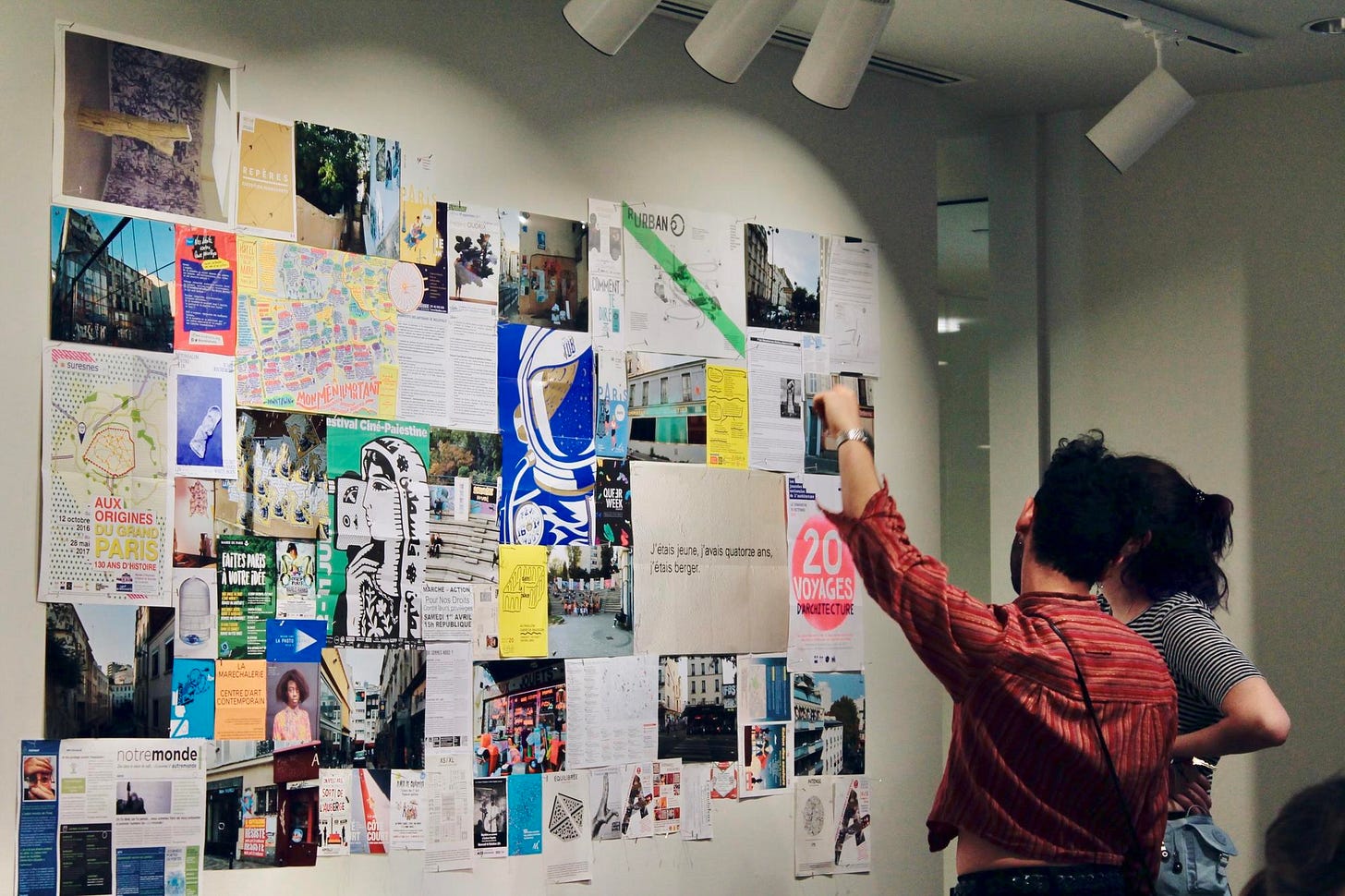
So it went and so it goes. Forty-seven days later, I had covered the north-facing wall of my studio with 325 pieces of size-A5 cold-pressed paper decorated with my writing and pigments.
The texts feed into a new book of poetry I began drafting at the residency, one that builds off of my recent collaboration with Alicia Nauta, Edge Theory. Writing directly on the page that went directly on the wall, exposed for the purpose of strangers’ viewing, was a uniquely distinct experience from that of writing in a notebook. A notebook gets open and closed. In it I keep poems for myself and the eyes of a select few, until finally released. There was something vulnerable and immediate about pinning poems to the wall. I would wake up in my studio and see them watching me. On good days, words spilled out of me and filled the wall. On bad days, I went to the lake for a swim. On better days, both.
Alongside writing, I got back into the swing of playing with colour. With plants I foraged in and around ZK/U (yellow flower petals, red currant, elderberry) and organic material gifted to me by fellow residents (pomegranate, roobios tea), I made small batch pigments somewhere between watercolour paint and botanical ink. While used to working hand-made dyes into the fibres of textiles, using them to leave a mark on the surface of paper presented a new challenge, one of both dimension and control. What kinds of images do I want to make on the two-dimensional surface? How do I want to be involved in their becoming? Where do my creativity and the agency of the material meet, and to what effect?
I practised something akin to painting for the first time since high school art class and found myself drawn to the creation of simple patterns, sacred geometries, and loosely guided mixtures. I found myself gradually creating a visual language in relation to my textual one. Like my writing, these paintings blend a penchant for the abstract and esoteric with my deep admiration for the beautiful, simple, and open.
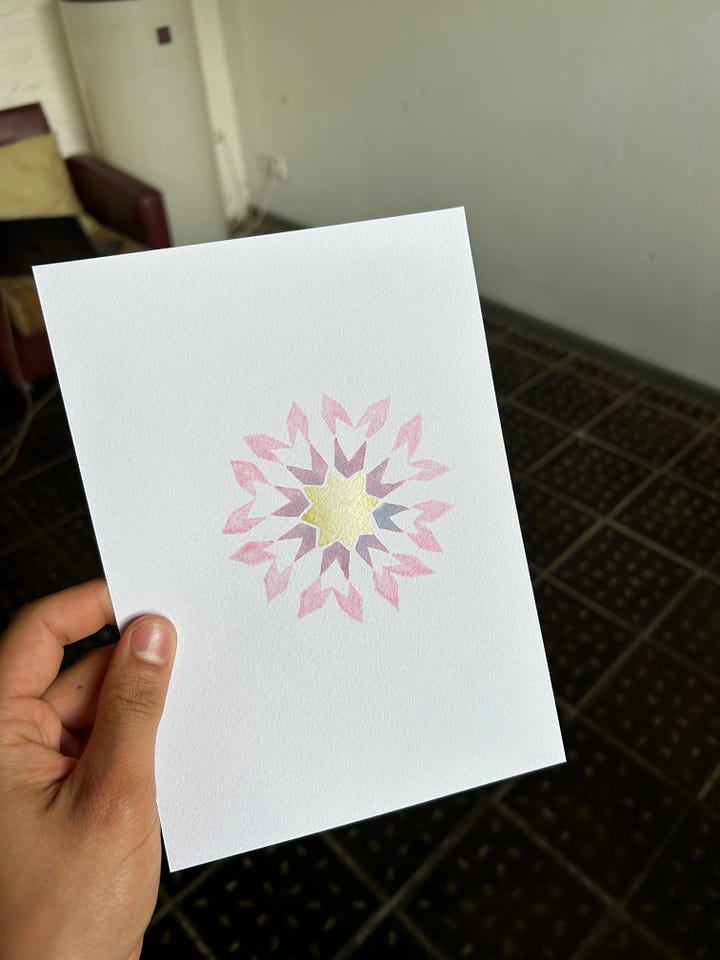
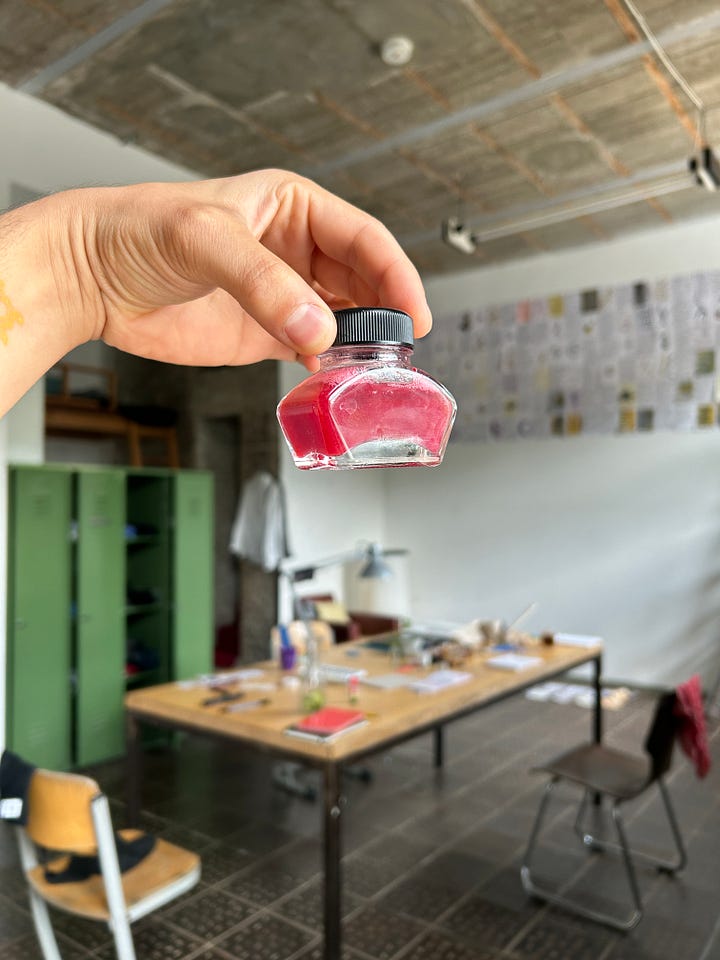
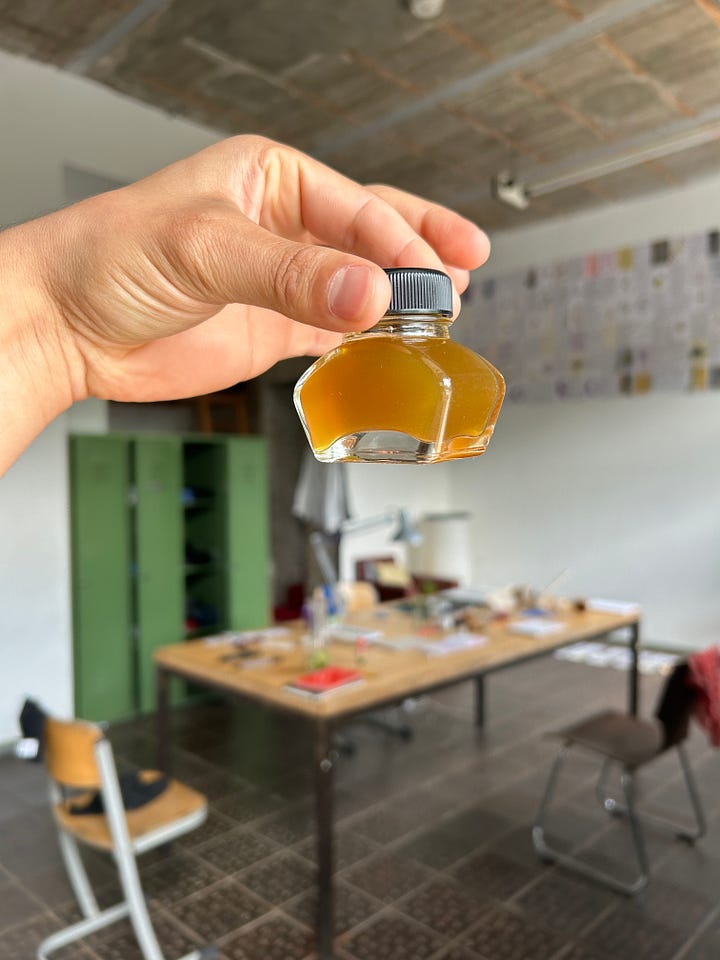
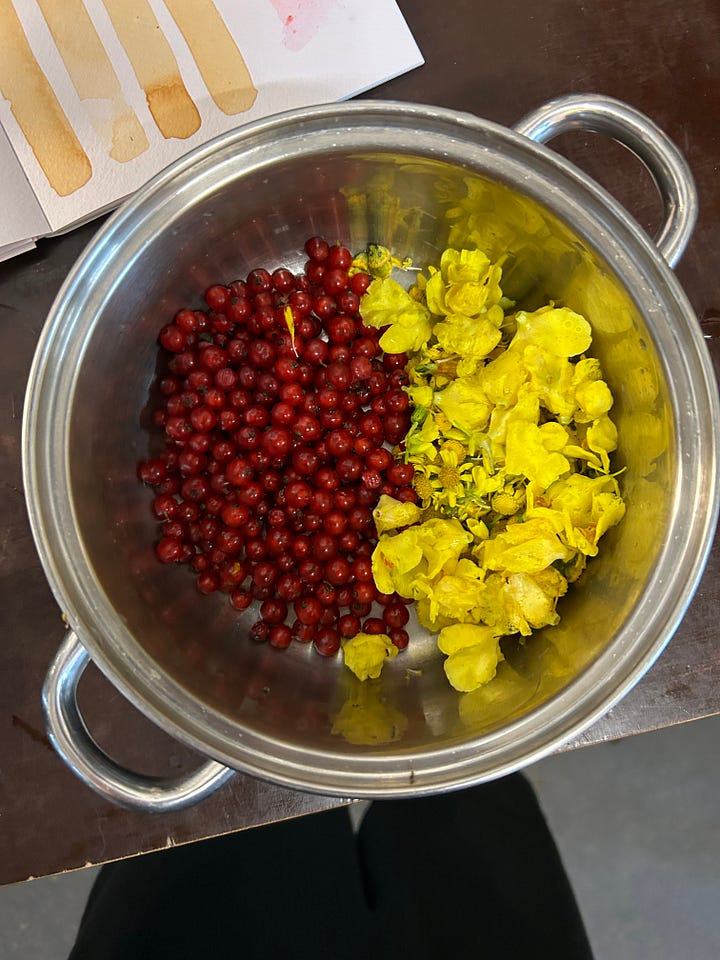
Never satisfied by the visual alone, I knew I wanted my installation to go beyond the wall. I wanted my public’s studio visit to engage the ears, nose, and hands. I had two years worth of itinerant field recordings saved to my phone, plus a small trove of dried plants, lost change, nylon rope, and other bits and pieces collected in my forage. To tie the installation all together, I made a small altar tucked away in the studio’s secret stairwell and a warped, recursive audio track to fill the room’s volume. I added to the altar a few books I cherish, including Theresa Hak Kyung Cha’s Dictée, and a reverberated reading of a poem from this book in the audio piece (linked below).
I wanted to share these reflections with you because this residency felt like an important milestone in my practice. Self-trained in what I do, I found myself growing every day from the focus I could give myself, which I would not have been able to afford without the financial backing of the Canada and Ontario councils of art (seriously, this residency wasn’t cheap). But just because I didn’t study this stuff in school doesn’t mean I learned what I do without the help of others. I’ve learned from and with many of you reading this.
Now in Paris, I feel grateful for the steps that led me to Berlin and for the special people I met in that strange place. While I didn’t get a chance to explore the city and its extent of cultural offerings to the extent I wanted, I am leaving with a handful of tender memories, a few new friends, and a bunch of material for my next chapter.
In other news . . .
I had the pleasure of writing the text introducing Essa Grayeb as artist-in-residence for the DAAD fellowship program. I first encountered Essa’s work in the screening Foggy organized by Queer Cinema for Palestine, which I was asked to review for C Mag. Essa’s approach to the working with archives — namely in what’s missing, silent, or unsaid — immediately impressed me. This new text briefly ties together key works in Essa’s practice through the concept of re(-)membering a now fragmented Arab history, which is all the more important today in the context of fractured alliances and the future of Palestine. We had the fortune to connect IRL for the first time in Berlin, since our two residencies started the same month!
In June I came across the book El Futuro by Luis Roldán y Juan Cárdenas (Proyecto Relámpago, Bogotá, 2022) at Berlin’s Hopscotch Reading Room. The hand-bound book includes lithograph-printed photos of rural tropical mountainsides and letterpressed texts oscillating between poetry, prose, and theory. The book’s meditation on the occult nature of the photographic, and the collaboration between image and text, lingers with me still.

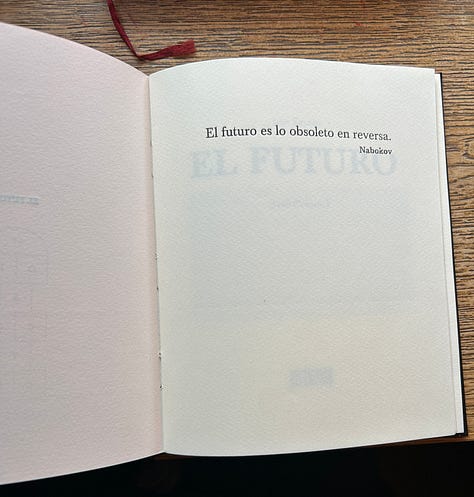
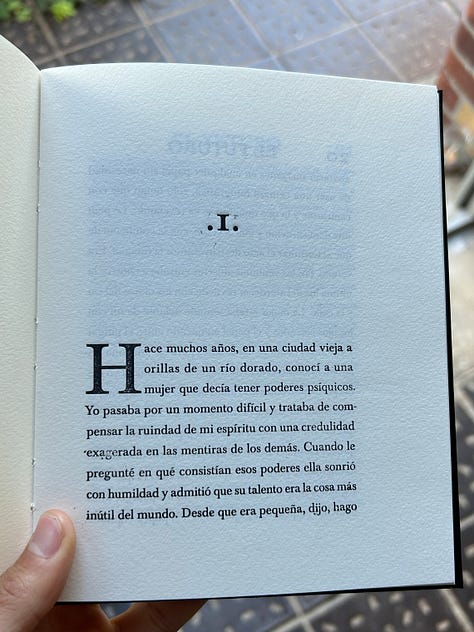
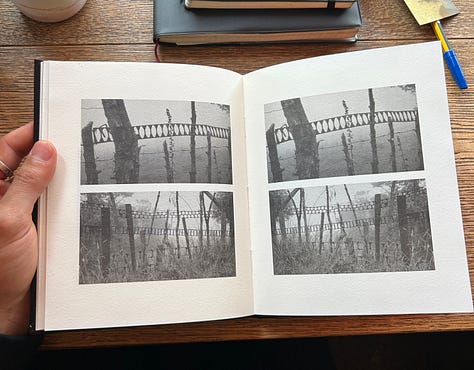
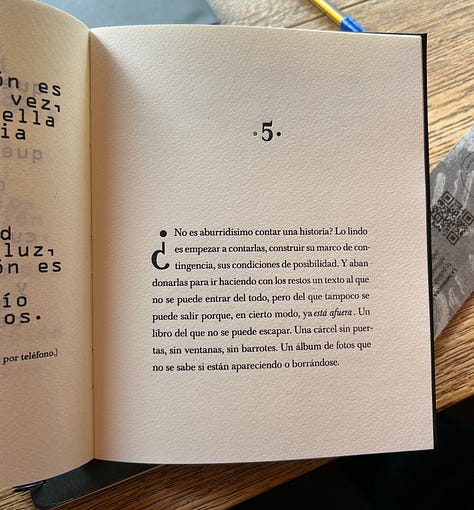

Edge Theory is now sold out! We've blasted through the first 100 copies of the chapbook. Your reception of this book has been truly heart warming. Now, just three months after it’s launch, we’re preparing for the second print run and getting it into more stores and bookshelves.
While in Berlin I also printed a zine & poster for another little work-in-progress, this time involving 60-odd small ceramic stones I made in Mexico City this past winter. I am slowly building these babies into a body of work I’m excited to share with you early next year. Special thanks to my pal Jessie at Khé Studio and Lauria at Colorama for their help on the stones and prints, respectively. Here’s a sneak peek . . .


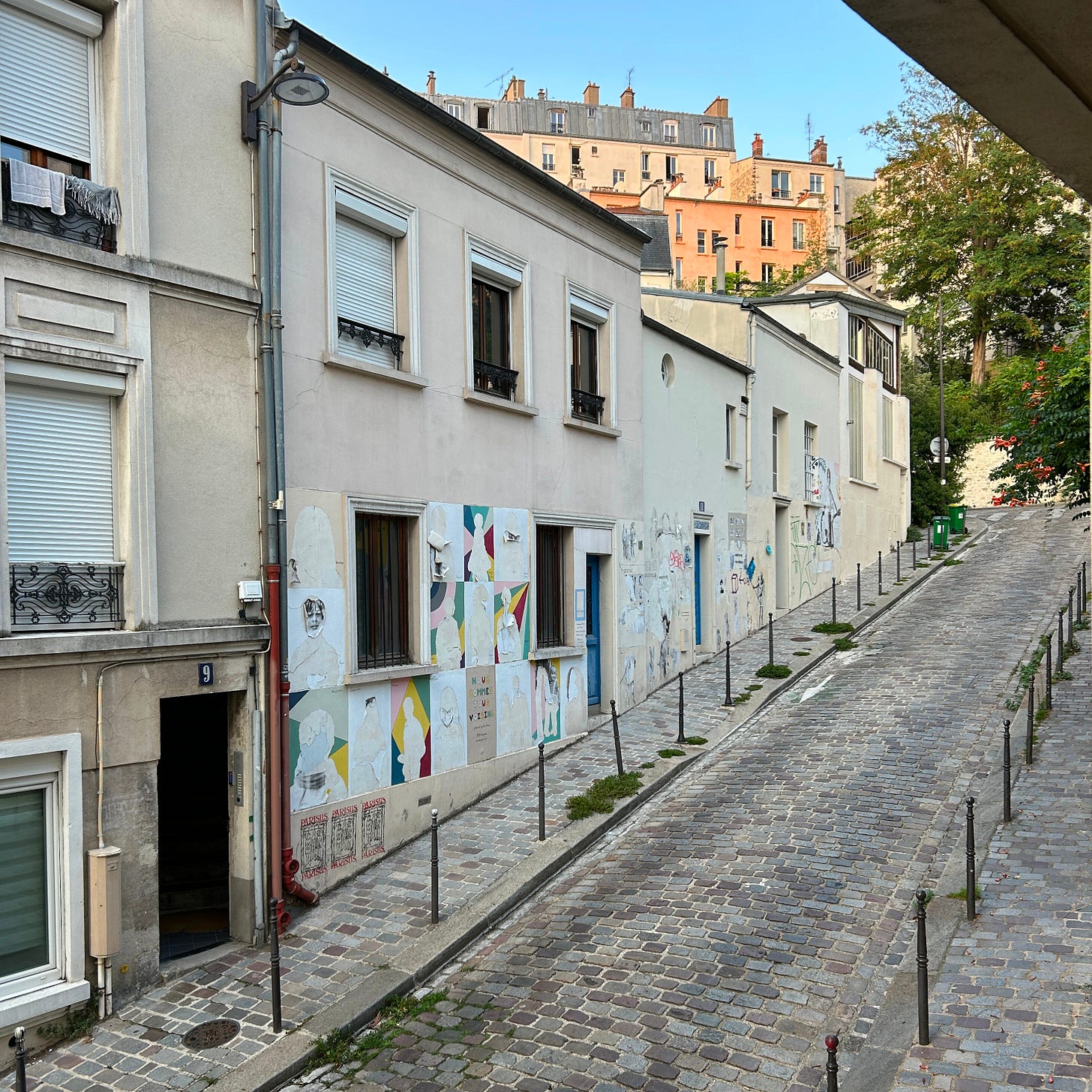
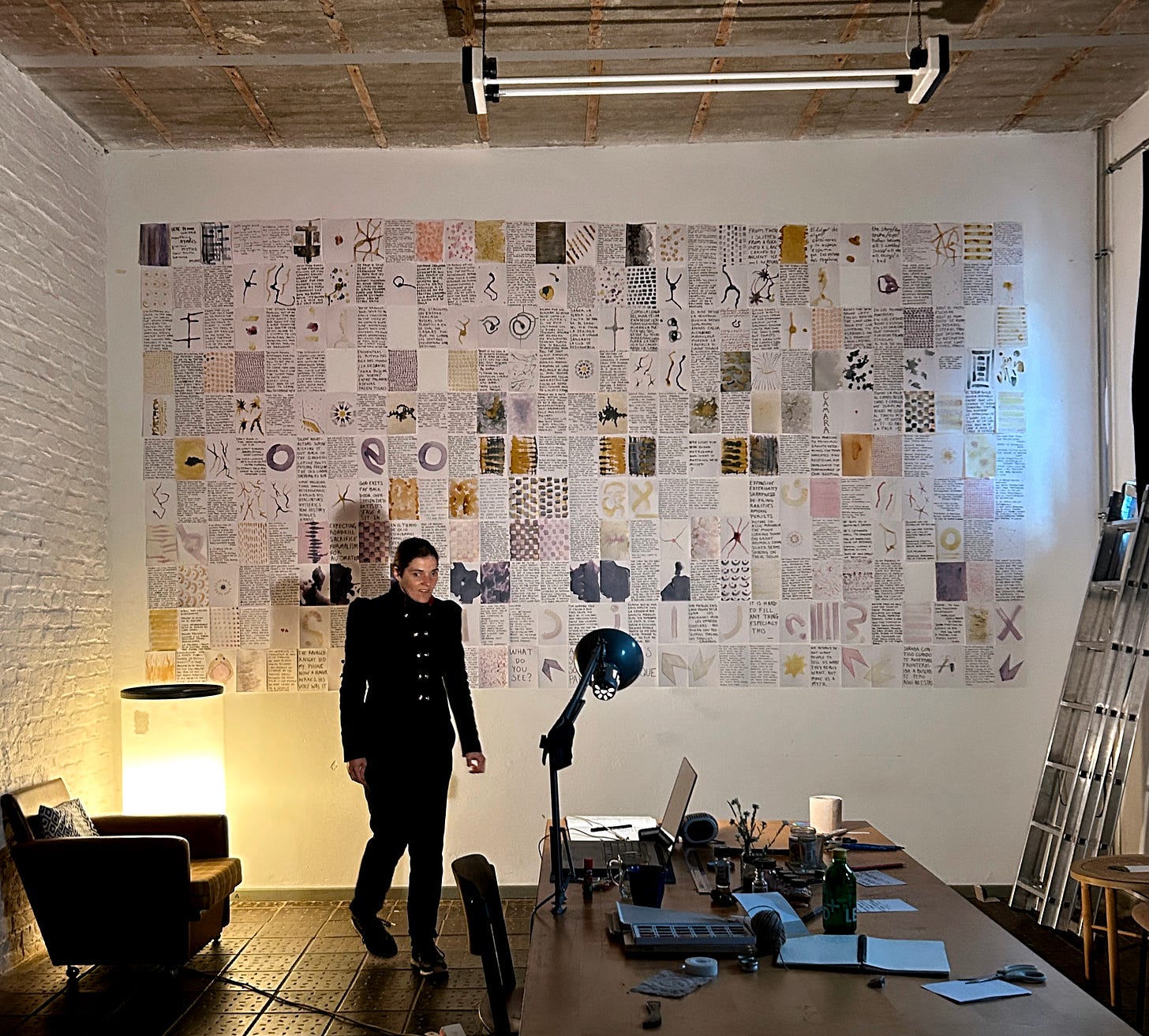
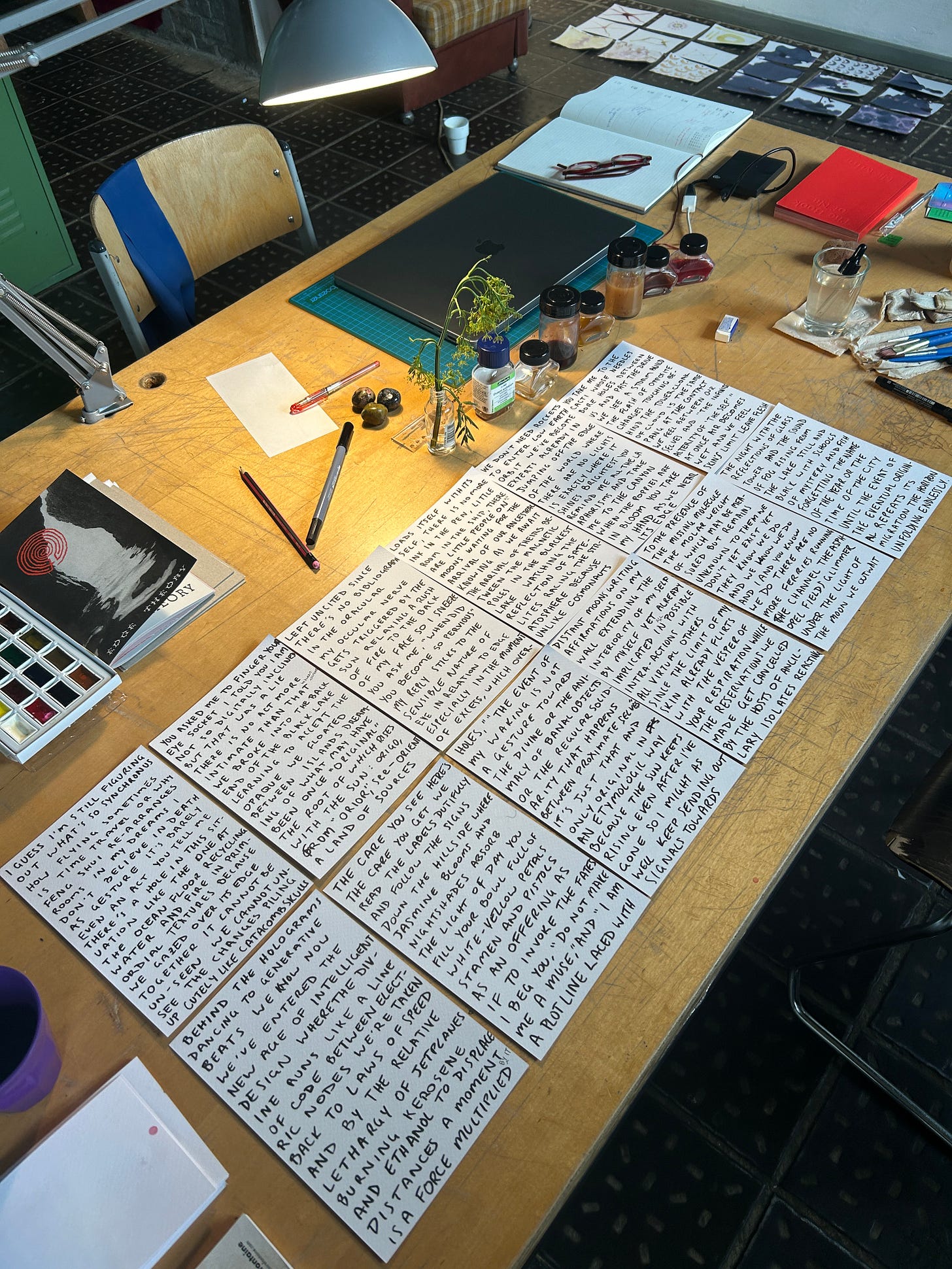
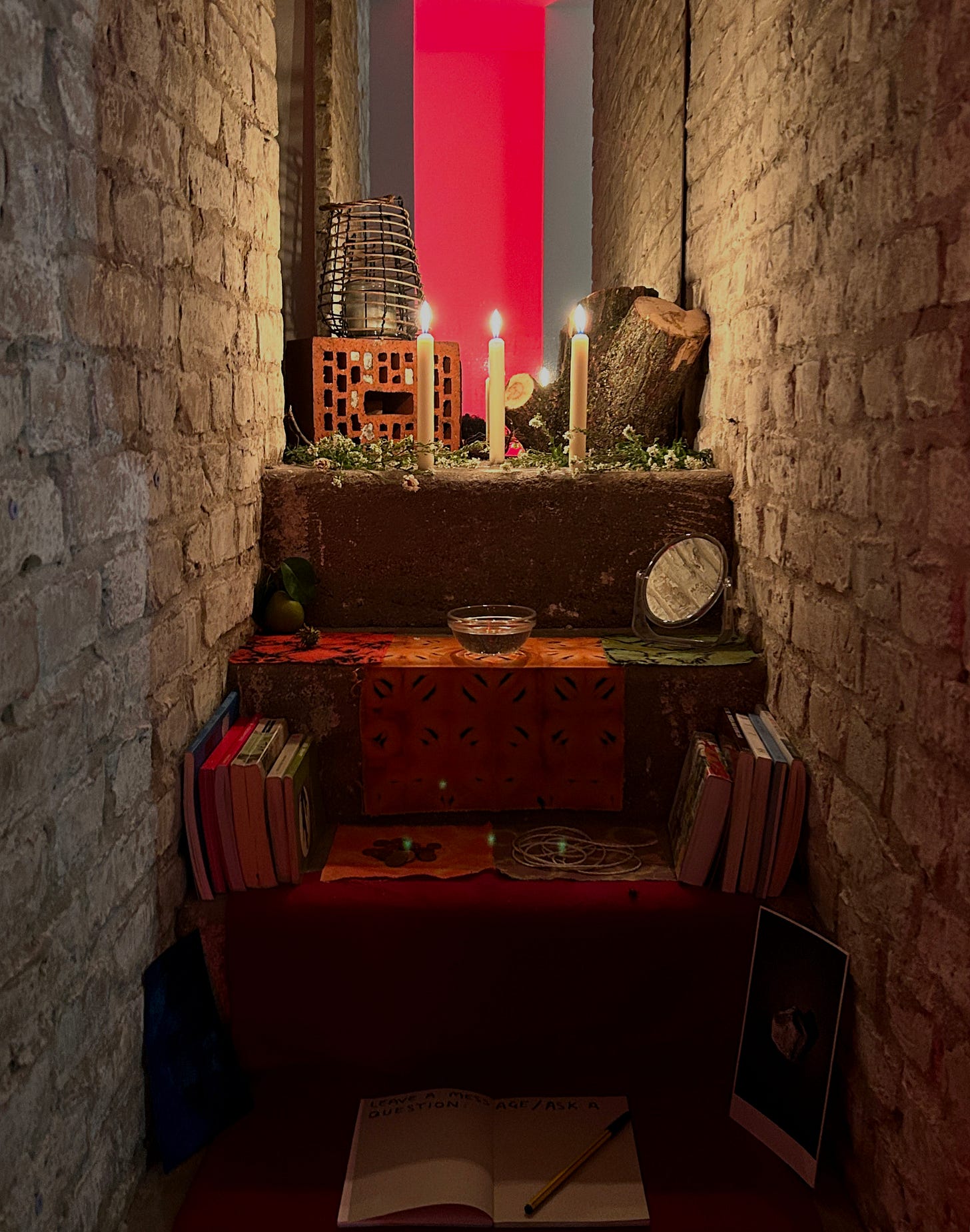
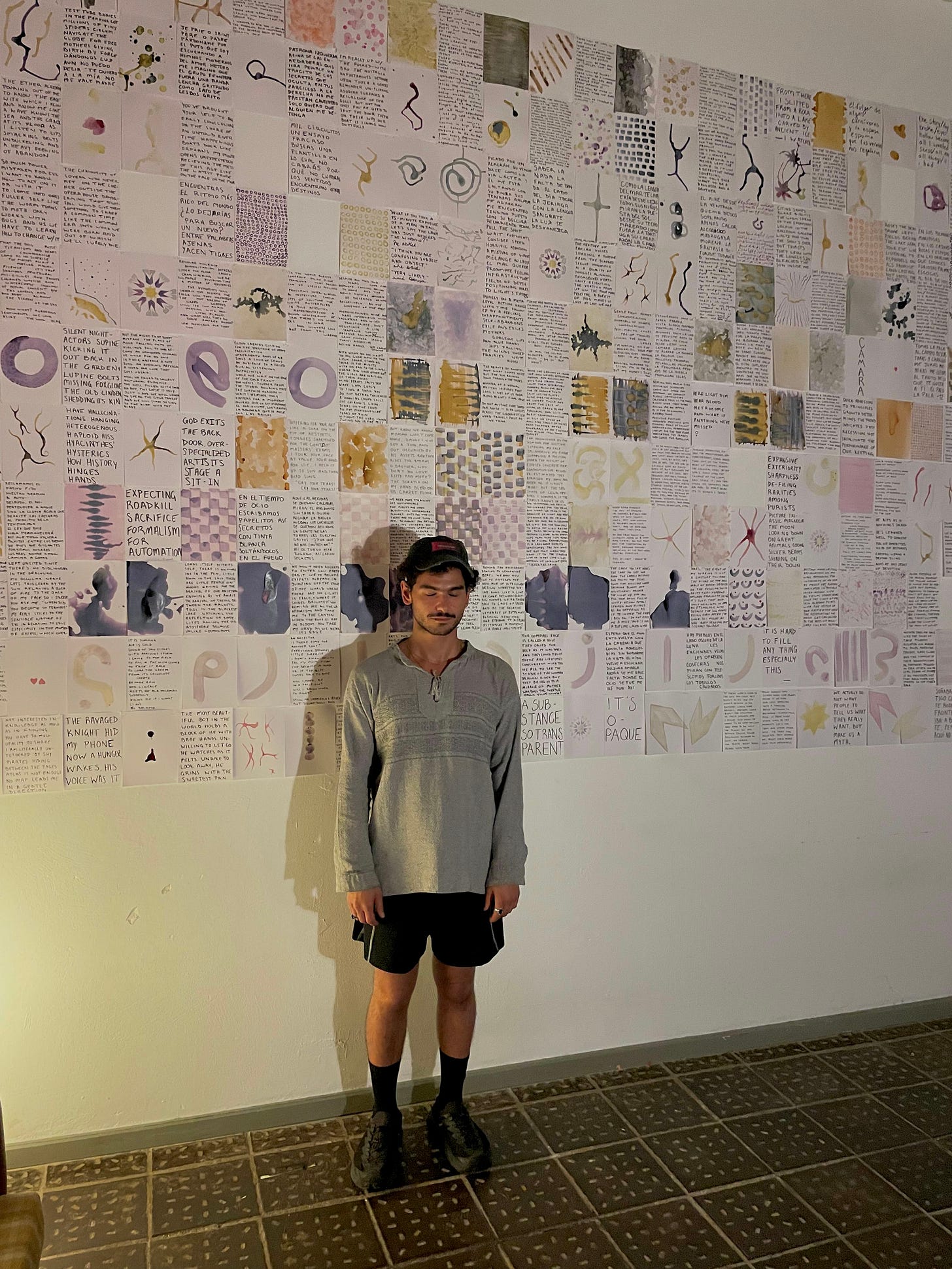

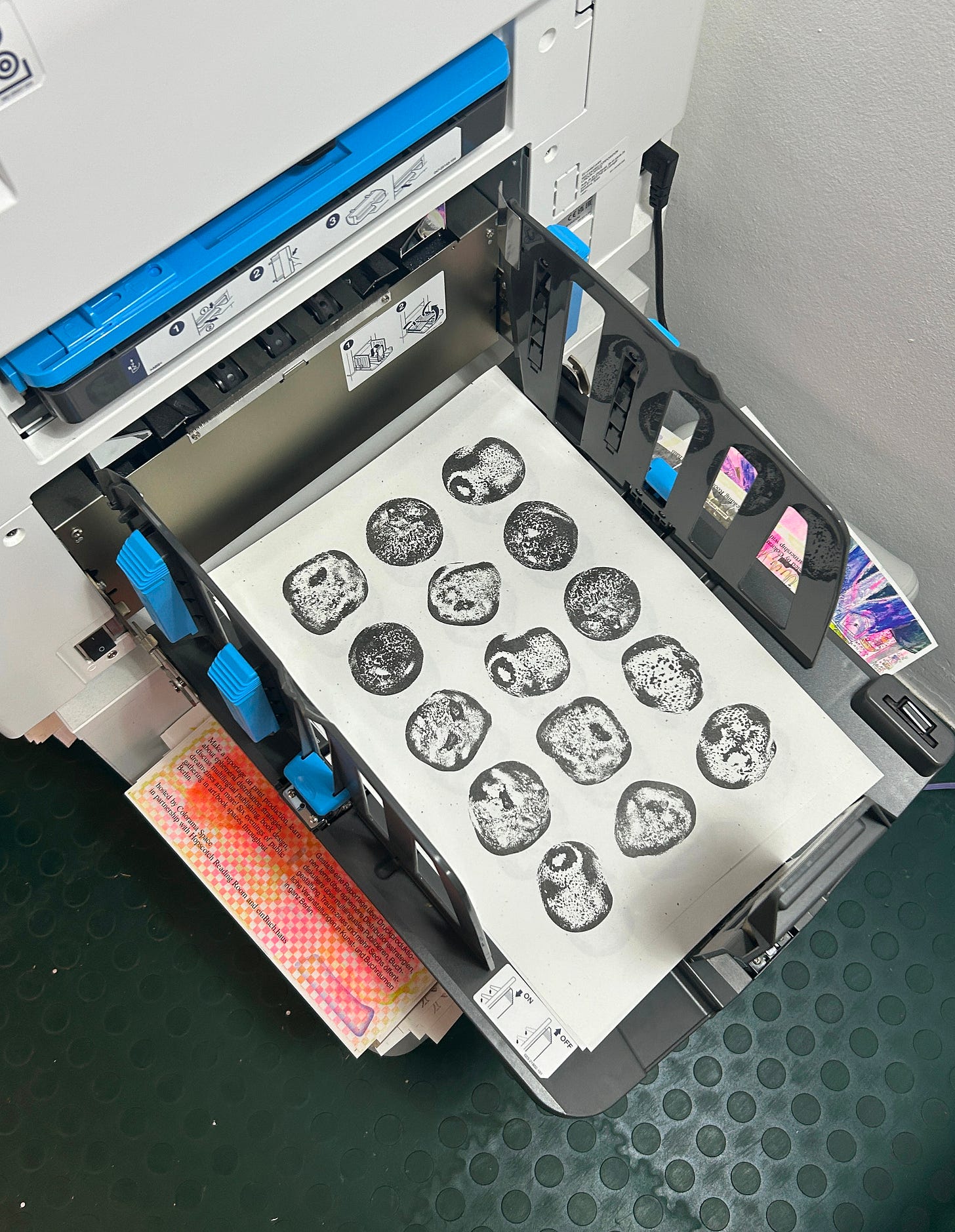
Love you. Love your work. Excited for the things coming!! 🥰
such a beautiful and specific feeling, to come back to and work from a desk you left behind with warmth in your heart. somehow i feel like the aura of where you are generates and defines the character of what you make there, which encourages a pace of perpetual displacement if one is interested in radical growth. i wonder what it feels like to come back so different, and if visceral continuity feels like a chance to grow roots rather than only leaves 🌱